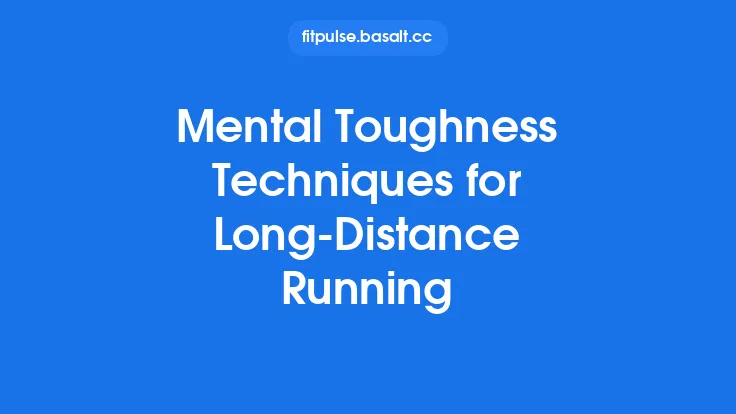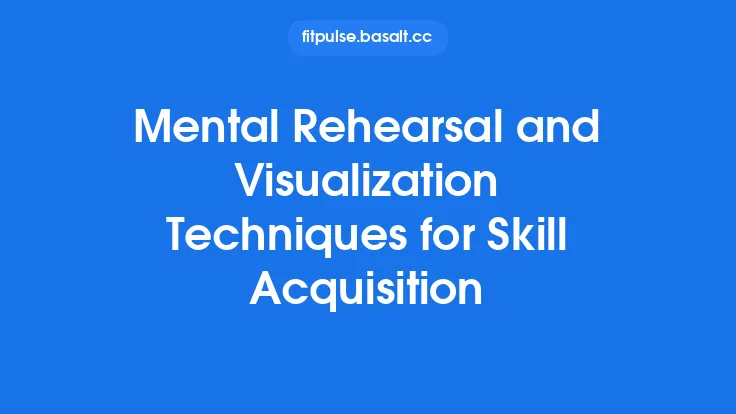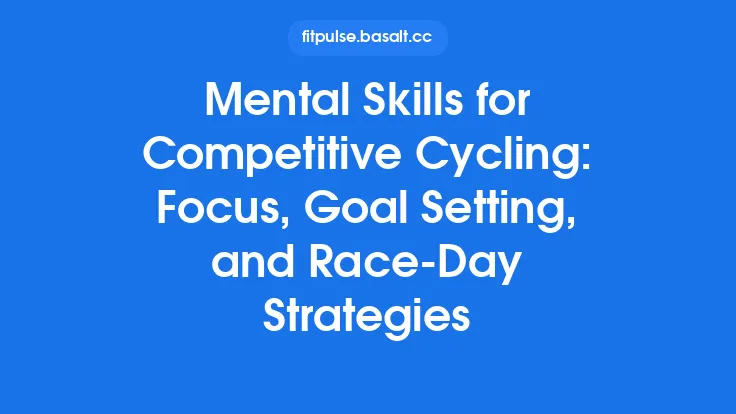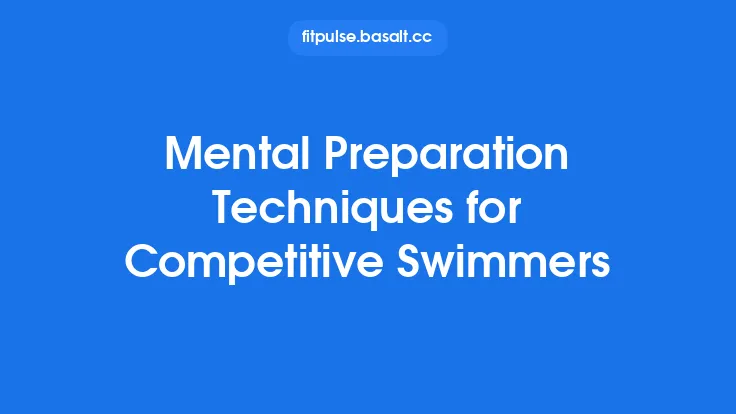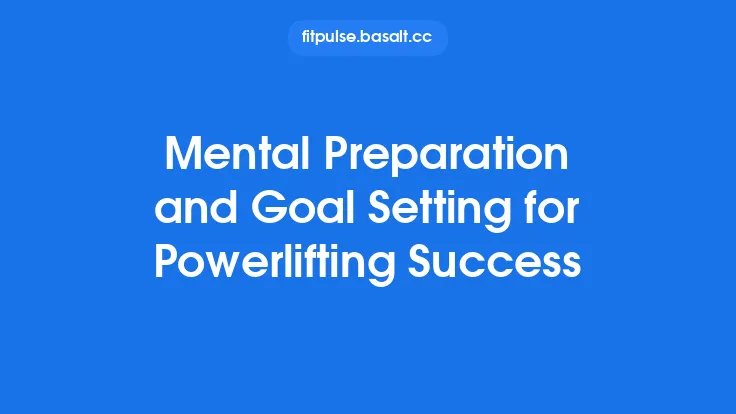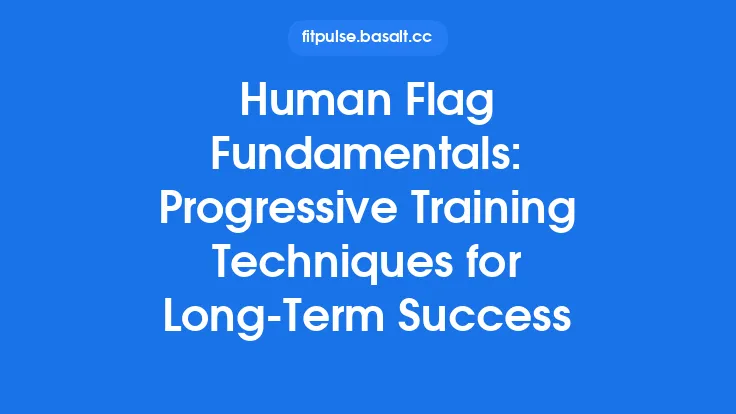In the high‑stakes world of combat sports, the difference between victory and defeat often hinges on what happens inside the athlete’s mind. While physical preparation is undeniably crucial, the ability to stay calm under pressure, maintain unwavering concentration, and mentally rehearse success can turn a good fighter into a great one. This article delves into the core components of mental toughness—specifically visualization and focus techniques—that fighters can integrate into their daily routine to sharpen performance, enhance confidence, and build resilience for the inevitable challenges of competition.
Understanding Mental Toughness in Combat Sports
Mental toughness is more than a buzzword; it is a measurable set of psychological skills that enable athletes to thrive under stress, recover quickly from setbacks, and sustain high levels of motivation. In combat sports, mental toughness manifests as:
- Emotional regulation: The capacity to stay composed when faced with aggression, crowd noise, or a sudden shift in fight dynamics.
- Cognitive flexibility: The ability to adapt tactics on the fly without becoming mentally rigid.
- Perseverance: Continuing to push forward despite fatigue, pain, or a temporary disadvantage.
Research in sport psychology consistently links these attributes to superior performance outcomes. For fighters, cultivating mental toughness is not an optional add‑on—it is a foundational pillar that supports technical execution, strategic decision‑making, and overall fight IQ.
The Science Behind Visualization
Visualization, also known as mental imagery or motor rehearsal, leverages the brain’s mirror‑neuron system to simulate physical actions without actual movement. Functional MRI studies have shown that when athletes vividly imagine a technique, the same neural pathways activated during real execution light up, albeit at a lower intensity. This neural overlap yields several benefits:
- Neural priming: Repeated mental rehearsal strengthens synaptic connections, making the actual movement more efficient when performed.
- Confidence building: Seeing oneself succeed in the mind’s eye creates a self‑fulfilling expectation of success.
- Stress reduction: Imagining a calm, controlled performance can lower cortisol levels, preparing the nervous system for the upcoming stressor.
For fighters, visualization can be applied to everything from perfecting a jab‑cross combination to rehearsing a defensive escape from a clinch. The key is to make the imagery as vivid and multisensory as possible.
Practical Visualization Techniques for Fighters
- Structured Session Planning
- Duration: 5–10 minutes per session, 3–4 times a day (morning, pre‑training, pre‑fight, evening).
- Environment: Quiet, dimly lit space with minimal distractions.
- Sequence: Begin with deep breathing (see “Breath Control” below), then transition into the imagery.
- First‑Person vs. Third‑Person Perspective
- First‑person (through your own eyes) enhances kinesthetic awareness and is ideal for fine‑tuning technique.
- Third‑person (watching yourself from the outside) helps evaluate overall strategy and positioning. Alternate both perspectives to gain a comprehensive mental map of the fight.
- Sensory Enrichment
- Visual: Picture the arena, lighting, opponent’s facial expressions, and the exact placement of your strikes.
- Auditory: Hear the crowd, the thud of gloves, the referee’s commands.
- Kinesthetic: Feel the weight of your gloves, the tension in your muscles, the impact of each hit.
- Emotional: Experience the surge of confidence, the calm focus, and the controlled aggression.
- Scenario‑Based Rehearsal
- Offensive Scenarios: Visualize executing a perfect combination, landing a decisive knockout, or transitioning from striking to a takedown.
- Defensive Scenarios: Imagine slipping a jab, countering a clinch, or escaping a ground scramble.
- Adversity Scenarios: Picture being behind on points, taking a hard shot, or dealing with an unexpected injury. Practice how you would stay composed and execute a comeback.
- Progressive Detail Layering
Start with a broad outline (e.g., “I win the round”) and gradually add layers of detail (specific strikes, timing, opponent’s reactions). This scaffolding approach prevents mental overload and builds a robust mental script.
Developing Laser‑Sharp Focus: Strategies and Drills
Focus in combat is the ability to sustain attention on relevant cues while filtering out distractions. Below are evidence‑based drills that sharpen this skill:
- Cue‑Based Concentration Drills
Choose a single auditory or visual cue (e.g., the sound of a bell, a specific word like “steady”). During shadowboxing, pause each time the cue occurs, reset your breathing, and continue. This trains the brain to re‑anchor attention instantly.
- Stroop‑Style Color‑Word Tasks
Perform a quick mental Stroop test (e.g., naming the color of a word that spells a different color) before training. This improves cognitive flexibility and reduces susceptibility to interference during a fight.
- Timed Focus Bursts
Set a timer for 30 seconds and execute a high‑intensity drill (e.g., rapid footwork) while maintaining perfect form. Rest for 15 seconds, then repeat. The short, intense intervals condition the mind to stay locked in under pressure.
- Environmental Simulation
Train with background noise (crowd recordings, music) or visual distractions (flashing lights). Gradually increase the intensity of these stimuli to habituate the brain to fight‑day conditions.
Breath Control and Mindful Awareness in the Cage
Breathing is the bridge between the autonomic nervous system and conscious control. Mastery of breath not only stabilizes heart rate but also serves as a mental anchor.
- Box Breathing (4‑4‑4‑4)
Inhale for four counts, hold for four, exhale for four, hold again for four. This rhythm reduces sympathetic arousal and can be employed between rounds or during clinches.
- Diaphragmatic Focus
Place a hand on the abdomen and feel the rise and fall with each breath. This tactile feedback reinforces deep, efficient breathing, preventing shallow chest breathing that can lead to early fatigue.
- Mindful Observation
During cool‑down, practice a body‑scan meditation: systematically bring attention to each muscle group, noting tension without judgment. This cultivates a non‑reactive awareness that translates to better emotional regulation in the heat of a bout.
Pre‑Fight Routines and Cue Words
A consistent pre‑fight routine creates a psychological “launch pad” that signals the brain it’s time to perform. Elements of an effective routine include:
- Physical Warm‑Up (limited to movement, not conditioning) – Light shadowboxing or mobility drills to activate proprioception.
- Mental Cue Words – Short, powerful phrases such as “relentless,” “laser,” or “steady.” Repeat them silently or aloud to reinforce the desired mental state.
- Visualization Recap – A brief 2‑minute mental run‑through of the fight plan, focusing on key moments.
- Breath Reset – One or two cycles of box breathing to settle nerves.
The routine should be rehearsed in training so that on fight day it becomes automatic, reducing decision fatigue and mental clutter.
Overcoming Performance Anxiety and Fear
Even elite fighters experience pre‑competition anxiety. The goal is not to eliminate fear but to channel it constructively.
- Cognitive Reframing
Replace catastrophic thoughts (“If I get hit, I’ll lose”) with performance‑focused statements (“I’m prepared to absorb and counter”). Write these reframed thoughts on a cue card and review them daily.
- Exposure Hierarchy
Gradually expose yourself to anxiety‑provoking scenarios (e.g., sparring with a higher‑rank opponent, simulating a loud arena) in a controlled environment. Incremental exposure desensitizes the nervous system.
- Self‑Compassion Practice
After a training setback, engage in a brief self‑compassion script: acknowledge the difficulty, remind yourself that imperfection is part of growth, and commit to learning. This reduces rumination and preserves confidence.
Building Resilience Through Stress Inoculation
Resilience is the capacity to bounce back from setbacks, both physical and mental. Stress inoculation training (SIT) involves deliberately introducing manageable stressors during practice to build coping mechanisms.
- Timed Pressure Drills
Perform a technical drill with a countdown timer that forces you to complete the task under time pressure. The mental strain mimics the urgency of a fight round.
- Unexpected Rule Changes
Mid‑session, have a coach announce a rule alteration (e.g., “Now focus on grappling from the clinch”). This forces rapid strategic adjustment, strengthening mental flexibility.
- Recovery Visualization
After a simulated setback (e.g., a heavy strike in sparring), close your eyes and visualize a swift, calm recovery—regaining composure, resetting breathing, and executing the next move flawlessly. This mental rehearsal reinforces actual recovery behavior.
Cognitive Training Tools and Technology
Modern technology offers supplemental avenues for sharpening focus and mental endurance.
- Neurofeedback Platforms
Devices that monitor brainwave activity (e.g., EEG headsets) provide real‑time feedback on concentration levels. Training sessions can teach athletes to enter a “flow” state more reliably.
- Stroop and N‑Back Apps
Mobile applications that present working‑memory challenges improve executive function, which translates to better decision‑making under pressure.
- Heart‑Rate Variability (HRV) Tracking
While primarily a physiological metric, HRV reflects autonomic balance. Monitoring HRV trends can inform when an athlete’s nervous system is primed for intense mental training versus when recovery is needed.
Integrating Mental Skills into Daily Training
To avoid treating mental training as a separate, optional activity, embed it seamlessly into the regular training schedule.
| Time of Day | Mental Skill | Integration Method |
|---|---|---|
| Morning | Visualization | 5‑minute mental rehearsal of fight plan while still in bed |
| Pre‑Training | Focus Cue | Choose a cue word and repeat it during warm‑up |
| During Training | Breath Control | Apply box breathing during transition periods (e.g., between rounds of pad work) |
| Post‑Training | Reflection & Reframing | Write a brief journal entry noting successes, challenges, and reframed thoughts |
| Evening | Mindful Body Scan | 10‑minute guided meditation focusing on relaxation and body awareness |
Consistency is the catalyst that transforms isolated mental exercises into ingrained habits.
Monitoring Progress and Adjusting Mental Plans
Just as physical performance is tracked with metrics, mental development benefits from systematic assessment.
- Self‑Report Scales
Use validated questionnaires such as the Sports Mental Toughness Questionnaire (SMTQ) or the Competitive State Anxiety Inventory‑2 (CSAI‑2) every 4–6 weeks to gauge changes.
- Performance Logs
Record instances where visualization or focus cues directly influenced a training outcome (e.g., “Successfully executed counter after visualizing opponent’s jab”). Review logs weekly to identify patterns.
- Coach Feedback
Incorporate a brief mental‑skill check‑in during regular coaching sessions. Coaches can observe behavioral cues (e.g., composure after a hard strike) and provide targeted suggestions.
When progress plateaus, adjust variables: increase imagery detail, vary focus drills, or introduce new technology tools to keep the brain challenged.
Conclusion
Mental toughness, anchored by purposeful visualization and disciplined focus, is a decisive factor in a fighter’s arsenal. By understanding the neurophysiological underpinnings, employing structured imagery routines, sharpening concentration through targeted drills, and integrating these practices into everyday training, combat athletes can cultivate a resilient mindset that thrives under pressure. The result is not merely a fighter who can throw a powerful punch, but one who can execute with precision, adapt with clarity, and maintain unwavering confidence from the first bell to the final round.
